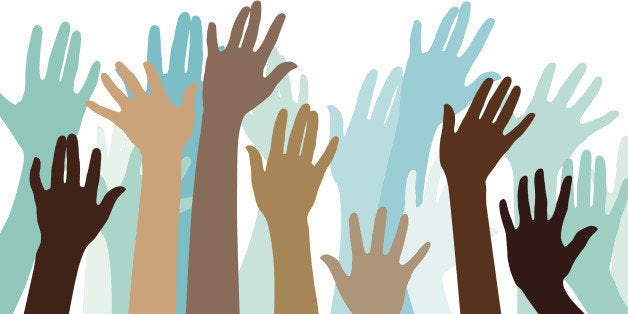
While the theme of this year's Sexual Assault Awareness Month (SAAM) campaign - "prevention is possible" - may sound simple, we know it's anything but. We're incredibly pleased about the success of this year's theme in continuing to drive significant attention to this important public health issue. We saw engagement from the U.S. Surgeon General, who turned his Twitter profile picture teal for the month; from Vice President Biden, who embarked upon a college campus tour during the "It's on Us" Week of Action; and from individuals, communities and businesses across the country.
But part of engaging on this issue also means sharing feedback and asking questions. This year we heard some thoughtful comments from our supporters on how our "prevention is possible" theme could be interpreted by some as placing an undue burden on sexual assault survivors. We know supporting survivors is the most important thing we can do in addressing sexual violence, and had not considered this interpretation of our message. For over a decade, this national campaign has focused on raising awareness to mobilize change in communities across the country. As April comes to a close, we'd like to take this opportunity to reflect on the core meaning of the message "prevention is possible".
As evidence that sexual assault is a serious and widespread public health issue, nearly one in five women in the United States have experienced rape or attempted rape some time in their lives, and one in 71 American men have experienced rape or attempted rape. The repercussions of this are vast in number and significant in impact. Victims of sexual assault often experience consequences including guilt, shame, fear, numbness, shock and feelings of isolation, and also long-term health risks and behaviors such as PTSD, eating disorders, depression, pregnancy and STI. It's clear that our society needs to prioritize prevention.
Despite the challenges inherent in addressing this far-reaching issue, if we all work together, we can prevent sexual violence. Prevention requires each of us to promote safe behaviors and healthy relationships in our own lives. It requires bystanders to intervene when they witness unsafe behavior. It requires parents to educate their children about healthy sexuality. It requires communities to believe and support survivors when they come forward and report. It requires lawmakers and leaders in the private sector to promote awareness and make policies that foster a cultural change. When everyone plays a role, prevention is possible.
It is also important to understand what "prevention is possible" should not mean -- namely that it is a victim's responsibility to stop a sexual assault before it happens. As Vice President Biden stated while addressing students at the University of Colorado at Boulder during the "It's On Us" Week of Action, "We will have success when not a single solitary woman who was abused ever asks herself what did I do. It is never, never, never, never a woman's fault." We couldn't agree more, and echo that the women, men and children who experience sexual violence are never to blame.
The good news is that we are making progress; prevention is not only possible, it's happening. Many individuals, communities and members of the private sector are already doing their part to help successfully combat the risk of sexual violence through programs, policies and research-based tools that promote safety, respect and equality. The ongoing increase in efforts to prevent sexual violence on college campuses -- the focus of last year's SAAM campaign -- shows us the many steps that can be taken toward progress.
NSVRC knows that shared responsibility and collaboration are key to driving real change. We're always grateful for and inspired by our partners, and this year have been especially proud to join with the U.S. Department of Health and Human Services' Office of Women's Health, "It's On Us," Peace Over Violence, Advocates for Youth and the Office of the U.S. Surgeon General -- along with many others -- in helping to put an end to sexual violence. We hope you'll join us throughout the year in helping to make prevention possible across all of our communities. The role each of us plays is essential. None of us can do it alone
